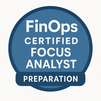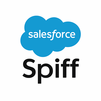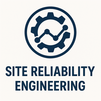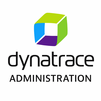
ServiceNow SPM (Strategic Portfolio Management) Training offers in-depth knowledge of managing enterprise portfolios, aligning investments with strategic goals, and enhancing value delivery. The course covers key areas such as Demand and Project Management, Agile Program Management, Lean Portfolio Management, Financial Planning, Resource Optimization, and advanced Reporting. Participants gain practical skills to drive strategic alignment, improve decision-making, and implement continuous planning using ServiceNow’s integrated SPM tools. Ideal for portfolio managers, PMOs, and enterprise architects.
ServiceNow SPM Training Interview Questions Answers - For Intermediate
1. What is Portfolio Prioritization in SPM?
Portfolio Prioritization in SPM allows organizations to evaluate and rank projects, demands, and initiatives based on criteria such as business value, cost, risk, and strategic alignment. It helps leaders make informed investment decisions by focusing on the initiatives that deliver the most value while considering resource and budget constraints.
2. What are Benefit Plans in ServiceNow SPM?
Benefit Plans are used to define and track the expected benefits of a project or program, such as cost savings, revenue generation, or compliance improvements. They help organizations ensure that projects deliver the promised value and enable post-implementation review of actual benefits achieved.
3. How does ServiceNow SPM handle Dependencies?
SPM allows users to define and manage dependencies between demands, projects, epics, stories, and milestones. Dependency tracking helps identify potential scheduling conflicts and risks, allowing project managers and portfolio owners to proactively resolve them to keep delivery on track.
4. What is Investment Funding in SPM?
Investment Funding is a feature that supports Lean Portfolio Management by allowing organizations to fund value streams, programs, or work types instead of individual projects. It provides flexibility in adjusting funding dynamically based on changing business priorities and outcomes.
5. What is the use of Roadmaps in SPM?
Roadmaps provide a visual timeline for key initiatives, projects, epics, and milestones. They help stakeholders and leadership teams understand the sequencing and interdependencies of strategic work, enabling better planning and communication of long-term goals.
6. How does SPM support Hybrid Project Management?
SPM supports Hybrid Project Management by allowing both traditional (waterfall) and agile methodologies to coexist. A single portfolio can include projects, agile epics, and demands, providing a unified view of work progress, resource usage, and alignment with strategic goals.
7. What is the role of Value Streams in SPM?
Value Streams represent the flow of work that delivers value to customers. In SPM, they help structure portfolios around customer-centric outcomes. Value Streams support Lean Portfolio Management and facilitate funding and governance of work that delivers measurable business value.
8. What is a Scoring Model in Demand Management?
A Scoring Model in Demand Management allows users to assign weights to various evaluation criteria—such as strategic alignment, cost, risk, ROI, urgency—to calculate an overall priority score. This helps decision-makers objectively prioritize demands in alignment with business goals.
9. What is the Innovation Portal in SPM?
The Innovation Portal is a user-friendly interface where employees and stakeholders can submit ideas. These ideas are reviewed, scored, and tracked through a stage-gate process, enabling organizations to foster innovation, crowdsource ideas, and manage them as part of their portfolio.
10. What is Resource Contention, and how is it handled in SPM?
Resource Contention occurs when multiple projects or demands compete for the same resources or skills. SPM helps manage contention by providing visibility into resource allocations, forecasting capacity, and enabling managers to reassign or prioritize work to balance workloads effectively.
11. How does SPM integrate with ServiceNow Performance Analytics?
SPM integrates with Performance Analytics to provide advanced dashboards and trend reports for projects, portfolios, resources, and financials. This enables leadership to track progress against KPIs, identify trends, and make data-driven decisions to optimize performance.
12. How does SPM facilitate Stakeholder Communication?
SPM supports effective stakeholder communication through dashboards, reports, roadmaps, and workbenches that provide transparent visibility into portfolio performance, project status, resource utilization, and risks. Stakeholders can access real-time information to stay aligned with strategic outcomes.
13. What is the use of Milestones in SPM Projects?
Milestones in SPM represent key points or deliverables within a project or program timeline. They are used to track progress, manage dependencies, and communicate important achievements to stakeholders. Milestones also serve as checkpoints for phase reviews or governance gates.
14. How is Risk Management handled in SPM?
SPM supports Risk Management by allowing users to identify, assess, and track risks at the project, program, or portfolio level. Risks can be categorized, prioritized, and mitigated through risk response plans, helping ensure that potential issues are proactively managed.
15. How does SPM support Continuous Improvement?
SPM supports Continuous Improvement by providing tools to track actual outcomes versus planned benefits, analyze project retrospectives, and gather feedback. Insights from past performance are used to refine processes, improve planning accuracy, and optimize resource utilization in future initiatives.
ServiceNow SPM Training Interview Questions Answers - For Advanced
1. How does ServiceNow SPM support Value Stream Management (VSM) at the enterprise level?
ServiceNow SPM supports Value Stream Management (VSM) by enabling organizations to model, manage, and optimize the flow of value across the enterprise. Value Streams can be defined within SPM, aligned with strategic goals and broken down into portfolio epics, programs, and initiatives. Using VSM dashboards, leadership can visualize end-to-end delivery metrics such as lead time, cycle time, and throughput. Dependencies and blockers can be identified in real-time, helping to improve flow efficiency. Integration with Agile Development and CI/CD tools further provides insights into how technology delivery aligns with business value. This capability ensures continuous optimization of value delivery, driving greater responsiveness to market demands.
2. Explain how Program Increment (PI) Planning is enabled within ServiceNow SPM.
Program Increment (PI) Planning is a key practice in scaled agile frameworks, and ServiceNow SPM supports this through integrated agile program boards and PI Planning workspaces. Portfolio epics and features are prioritized and broken down into sprints within a program. During PI Planning, teams use visual boards to assign features to Agile Release Trains (ARTs), manage dependencies, and align delivery timelines with business objectives. The system supports real-time collaboration across geographically distributed teams and provides mechanisms for tracking committed objectives versus actual delivery. The tight integration ensures that PI Planning outcomes automatically update portfolio roadmaps and investment plans.
3. What is the role of OKRs (Objectives & Key Results) within ServiceNow SPM?
OKRs in ServiceNow SPM provide a structured method to align strategic objectives with measurable outcomes. Business leaders can define corporate and departmental objectives, each associated with multiple key results. These OKRs are linked to portfolios, programs, projects, and epics, ensuring that execution activities directly support strategic goals. The system automatically tracks progress on key results through integration with delivery data and operational KPIs. Visual dashboards highlight progress and alignment gaps, fostering transparency and accountability. By cascading OKRs throughout the portfolio hierarchy, SPM ensures that every level of work is contributing to organizational success.
4. How does SPM manage cross-portfolio dependencies?
SPM manages cross-portfolio dependencies using advanced visualization and tracking tools. Portfolio managers can create dependency records between projects, programs, and epics across different portfolios. These dependencies are visualized on roadmap views, Gantt charts, and agile program boards. Automated alerts and dependency risk scoring help surface potential schedule or resource conflicts. When changes occur in one portfolio, dependency impact analysis identifies affected initiatives in other portfolios, enabling proactive resolution. This ensures that strategic alignment and delivery coordination are maintained even in large, complex enterprise environments with multiple parallel portfolios.
5. Describe the use of Roadmap Planning in ServiceNow SPM.
Roadmap Planning in ServiceNow SPM offers dynamic, visual tools for planning and communicating the delivery timeline of strategic initiatives. Users can create multi-layered roadmaps showing portfolios, programs, projects, and key milestones. Roadmaps are interactive, supporting drag-and-drop adjustments and scenario modeling. Dependencies and constraints are visually represented, providing immediate insights into delivery risks. Stakeholders can view roadmaps tailored to their role—executives see strategic-level views, while program managers see delivery details. Roadmap Planning supports ongoing communication and alignment across all levels of the organization, ensuring that strategic plans remain current and actionable.
6. How does ServiceNow SPM enable dynamic resource reallocation?
ServiceNow SPM enables dynamic resource reallocation by continuously monitoring resource availability, demand, and utilization in real time. Resource managers can view current and forecasted allocations, identify underutilized or overcommitted resources, and quickly reassign work through intuitive planning tools. Resource Planning Workbench allows drag-and-drop reassignment of resources across projects and programs. Integration with demand management and agile workspaces ensures that resource changes are reflected across the portfolio. Automated alerts highlight emerging capacity risks, enabling timely interventions. This agility in resource management helps organizations respond to shifting priorities and maximize workforce effectiveness.
7. What role does Portfolio Scoring play in investment prioritization within SPM?
Portfolio Scoring in SPM provides an objective, data-driven method for prioritizing investments. Scoring models can be configured to evaluate demands, projects, and epics based on multiple criteria such as strategic alignment, financial benefit, risk, regulatory impact, and resource availability. Weighted scoring frameworks ensure consistency across the enterprise. Scores drive prioritization views within portfolio planning workspaces and influence funding and resource allocation decisions. The transparency of the scoring process fosters trust among stakeholders and ensures that the most valuable and strategically important initiatives are selected for execution.
8. How can SPM integrate with third-party agile tools like Jira or Azure DevOps?
ServiceNow SPM offers robust integration capabilities with popular agile tools such as Jira and Azure DevOps via Integration Hub spokes, APIs, or native connectors. Epics and features can be synchronized bidirectionally, ensuring that work managed in external agile tools is reflected within SPM. Delivery progress, sprint status, and velocity data from Jira/ADO feed into SPM dashboards and portfolio metrics. Dependency and risk information is also synchronized. This hybrid delivery integration allows organizations to leverage best-of-breed agile tools while maintaining a unified view of strategic portfolio execution within ServiceNow SPM.
9. Explain how SPM supports Capital Planning for large-scale initiatives.
SPM supports Capital Planning by enabling organizations to manage long-term funding and financial governance for large initiatives. Capital investments can be planned and tracked at portfolio, program, and project levels. Capital vs. operational expenditure can be modeled and reported separately. Integration with enterprise financial systems ensures accurate reflection of actuals and forecasts. Milestone-based funding and stage-gate reviews help control capital spend. Benefits realization tracking ties financial outcomes to strategic objectives. This capability ensures that capital-intensive initiatives remain aligned with corporate goals and deliver expected returns on investment.
10. What is the significance of Portfolio Epics in SPM and how are they managed?
Portfolio Epics represent high-level, strategic initiatives within ServiceNow SPM. They are the primary mechanism for connecting business strategy to delivery execution. Epics can span multiple projects and agile features, and are linked to OKRs, strategic goals, and value streams. SPM provides tools for planning, tracking, and reporting on epics across their entire lifecycle. Program managers use Program Boards to break down epics into features and stories. Portfolio managers monitor epic progress and value delivery using dashboards and analytics. Managing epics in this structured way ensures traceability from strategy to outcomes.
11. How does ServiceNow SPM leverage AI to support strategic portfolio planning?
ServiceNow SPM leverages AI through the Insights Engine and Predictive Intelligence to support strategic portfolio planning. The system analyzes historical data to identify patterns of success and risk across projects and portfolios. It can suggest optimal prioritization of investments, forecast resource bottlenecks, and highlight emerging risks. AI-driven recommendations surface alternative funding scenarios and capacity adjustments. These insights enable portfolio leaders to make more informed, forward-looking decisions. The continuous learning capability of the AI ensures that recommendations improve over time, adapting to evolving organizational patterns and market dynamics.
12. How are Business Cases structured and utilized within ServiceNow SPM?
Business Cases in SPM are structured documents that capture the rationale, expected benefits, costs, risks, and resource requirements for a proposed initiative. They are linked to demands, projects, and programs. Business Cases include financial models, benefit realization plans, and strategic alignment scoring. The approval workflow for Business Cases ensures that all stakeholders review and endorse the proposal before funding is allocated. Once approved, Business Case data flows into execution and reporting, providing a baseline for measuring project success and value delivery. This structured approach enhances investment governance and transparency.
13. How does ServiceNow SPM facilitate strategic portfolio reviews?
SPM facilitates strategic portfolio reviews by providing integrated dashboards, executive reports, and collaboration workspaces. During portfolio reviews, decision-makers can examine progress against strategic objectives, portfolio health, financial performance, resource utilization, and risk exposure. Scenario Planning tools enable rapid evaluation of alternative investment and resourcing strategies. Real-time data ensures that reviews are based on the latest insights. Meeting notes, action items, and decisions can be captured directly within SPM, ensuring continuity and accountability. This fosters a culture of data-driven, transparent governance and continuous alignment with enterprise strategy.
14. What reporting and visualization capabilities does SPM provide for C-level stakeholders?
SPM provides advanced, executive-friendly reporting and visualization tools for C-level stakeholders. Interactive dashboards display portfolio performance, strategic alignment, financials, OKRs, and delivery progress. Visual roadmaps and heatmaps provide intuitive insights into priority areas, risks, and trends. Reports can be tailored for different C-suite roles (CIO, CFO, COO, CEO), highlighting metrics most relevant to their concerns. Predictive insights and what-if scenario models support strategic decision-making. Reports can be scheduled or generated on demand, with drill-down capability for deeper analysis. This ensures that leadership maintains a comprehensive, real-time view of strategic portfolio performance.
15. How does ServiceNow SPM support Enterprise Architecture alignment?
SPM supports Enterprise Architecture (EA) alignment by integrating with ServiceNow Application Portfolio Management (APM) and the CMDB. Projects and portfolio epics can be linked to applications, business capabilities, and technology components. EA teams can assess the impact of proposed changes on the current and target architecture. SPM roadmaps can reflect architectural transition states, ensuring that delivery plans support long-term EA goals. Risk and compliance implications are surfaced through integration with GRC. This holistic alignment ensures that strategic investments are architecturally sound and support sustainable digital transformation.
Course Schedule
| Dec, 2025 | Weekdays | Mon-Fri | Enquire Now |
| Weekend | Sat-Sun | Enquire Now | |
| Jan, 2026 | Weekdays | Mon-Fri | Enquire Now |
| Weekend | Sat-Sun | Enquire Now |
Related Courses
Related Articles
Related Interview
Related FAQ's
- Instructor-led Live Online Interactive Training
- Project Based Customized Learning
- Fast Track Training Program
- Self-paced learning
- In one-on-one training, you have the flexibility to choose the days, timings, and duration according to your preferences.
- We create a personalized training calendar based on your chosen schedule.
- Complete Live Online Interactive Training of the Course
- After Training Recorded Videos
- Session-wise Learning Material and notes for lifetime
- Practical & Assignments exercises
- Global Course Completion Certificate
- 24x7 after Training Support











 Join our Live Instructor-Led online classes delivered by industry experts
Join our Live Instructor-Led online classes delivered by industry experts